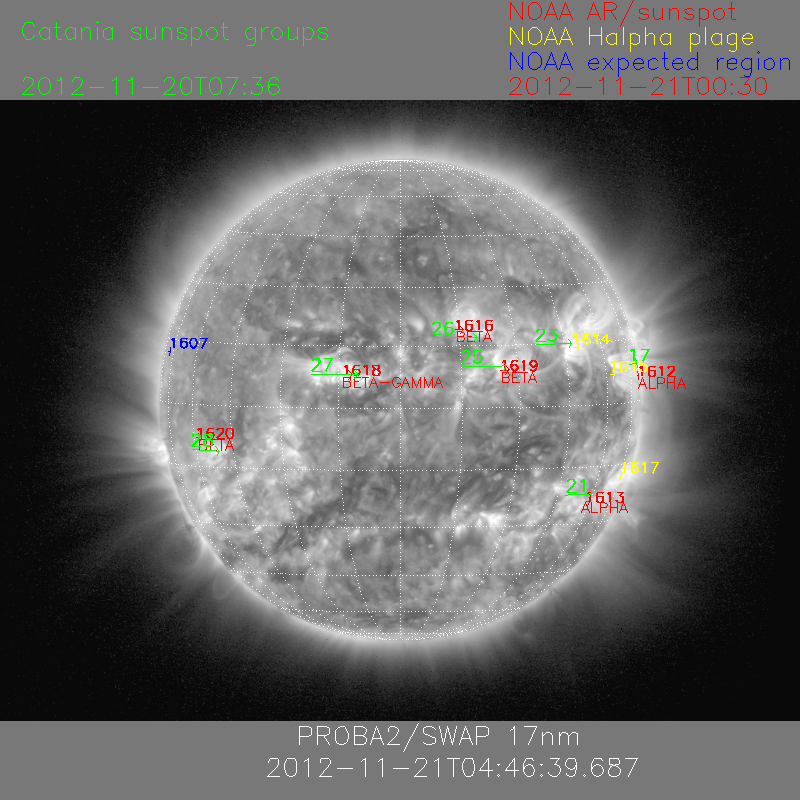M1.4 solar flare with Earth directed CME erupted from Region 1618 – G1 geomagnetic storm predicted [1]
Source: The Watchers [2] - 11/21/12, By Adonai

Another moderate solar flare erupted from Active Region 1618. The event started at 06:45 UTC, peaked at 06:56 UTC at M1.4, November 21, 2012 and ended at 07:08 UTC. Region 1618 still has Beta-Gamma classification, harbors energy for strong solar flares and is Earth directed.
Two eruption filaments were observed, both were Earth facing. A Coronal Mass Ejection (CME) is expected to impact the Earth sometime November 23 and may spark a G1 or G2 class Geomagnetic Storm.

A Type II and Type IV Radio Emissions were reported indicating a strong Coronal Mass Ejection (CME):
Space Weather Message Code: ALTTP2
Serial Number: 830
Issue Time: 2012 Nov 21 0728 UTC
ALERT: Type II Radio Emission
Begin Time: 2012 Nov 21 0654 UTC
Estimated Velocity: 720 km/s
Description: Type II emissions occur in association with eruptions on the sun and typically indicate a coronal mass ejection is associated with a flare event.
***
Space Weather Message Code: ALTTP4
Serial Number: 397
Issue Time: 2012 Nov 21 0729 UTC
ALERT: Type IV Radio Emission
Begin Time: 2012 Nov 21 0703 UTC
Description: Type IV emissions occur in association with major eruptions on the sun and are typically associated with strong coronal mass ejections and solar radiation storms.
***
At 07:36 UTC, November 21, 2012 SWPC issued a prediction for geomagnetic storm category G1:
Space Weather Message Code: WATA20
Serial Number: 504
Issue Time: 2012 Nov 21 0636 UTC
WATCH: Geomagnetic Storm Category G1 Predicted
Highest Storm Level Predicted by Day:
Nov 22: None (Below G1) Nov 23: None (Below G1) Nov 24: G1 (Minor)
THIS SUPERSEDES ANY/ALL PRIOR WATCHES IN EFFECT
Potential Impacts: Area of impact primarily poleward of 60 degrees Geomagnetic Latitude.
Induced Currents - Weak power grid fluctuations can occur.
Spacecraft - Minor impact on satellite operations possible.
Aurora – Aurora may be visible at high latitudes, i.e., northern tier of the U.S. such as northern Michigan and Maine.
Featured image: Courtesy of NASA/SDO and the AIA, EVE, and HMI science teams.


